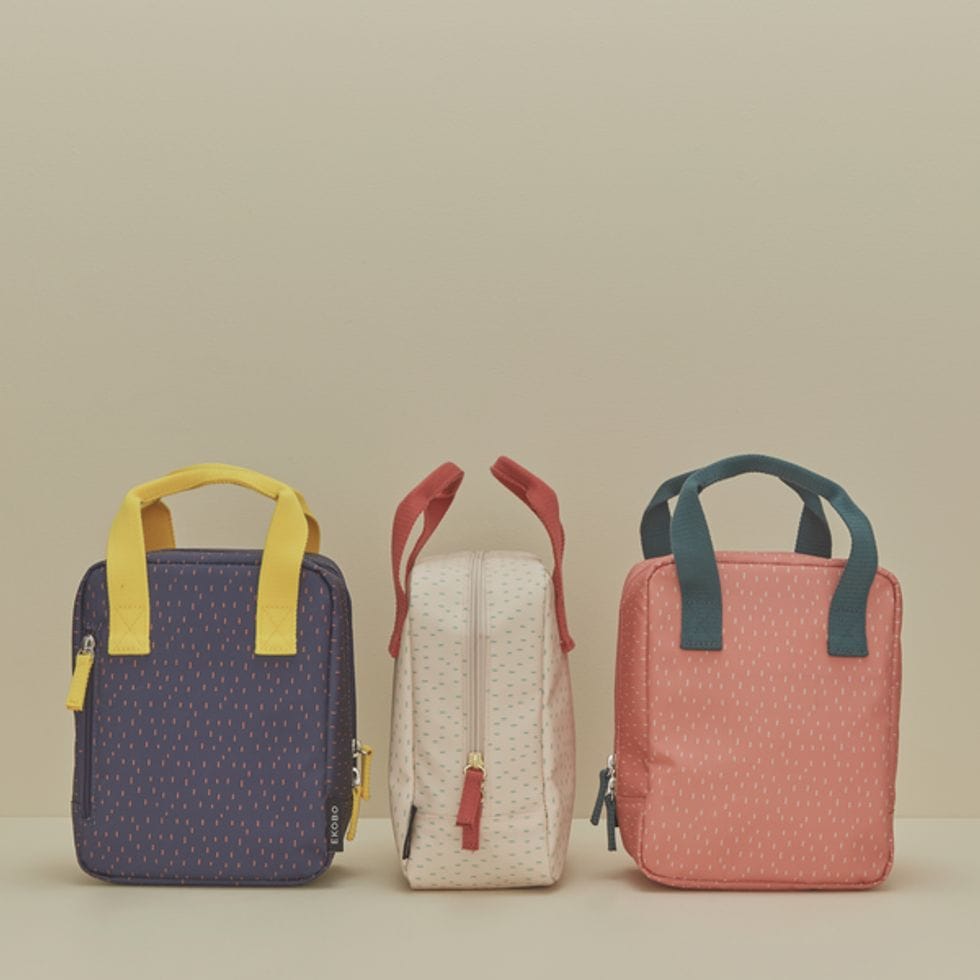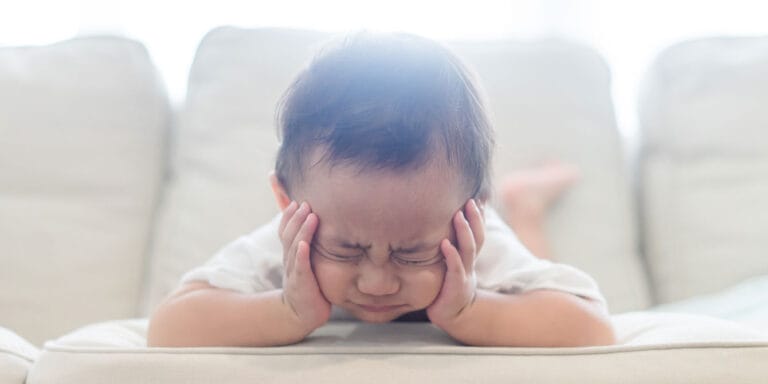14 phrases to help prepare your preschooler for school this year

5byseven/Twenty20
Difficult drop-offs might happen, but this can help.
Table of Contents
This year, the first day of school will look different. For parents and teachers of the youngest learners—those entering preschool programs—this year brings particular changes and challenges.
Even in the best of times, the early days of the school year are filled with mixed emotions for adults and children alike. Many preschools build in a gradual separation or phase-in period to build a bridge between home and school, allowing children and their families to separate confidently.
But this fall, as a necessary safety precaution, schools will be limiting the number of adults in the building. For most preschoolers, the first day of school will involve an at-the-door drop-off with a masked teacher. This is a far cry from the gentle introduction of previous years. Add to that the fact that most of these children will be coming off of months of being isolated with their families, and you have a recipe for some difficult goodbyes.
Fortunately, there is much you can do to support your preschooler as they enter the classroom.
Here’s how to prepare your preschooler (and yourself!) for a smoother transition into an unprecedented school year.
1. Get familiar with your preschool’s new policies.
Your child’s preschool is likely to be in communication with parents about expectations and routines for this year, and it’s a good idea to carefully read these expectations to avoid surprises. “For example, telling a child that their stuffed bear can come, and discovering at the gate that it can’t, might trigger additional stress for the child,” says Julia Luckenbill, MA, Child Development Demonstration Lecturer, Center for Child and Family Studies at UC Davis.
Your child is looking to you for cues about how they should feel. Talk about school in the days leading up to it. Describe what your child can expect to see and do at school, then relate it to familiar experiences from home.
Phrases to try:
“All the grownups will wear masks just like I do when I go to the store.”
“Your classroom will have lots of toys to play with. I wonder if they will have blocks like ours.”
2. Talk about what’s the same, as well as what’s different.
If your child has previously been in school, explain what will be the same and what will be new this year. “While emphasizing and practicing the new things will be important, noticing which things are the same is also best practice,” says Luckenbill. Keep it simple and light.
Phrases to try:
“Look, you’ll have circle time, just like last year!”
“I see that Tomiko will be your teacher again, I wonder what you will say to her when you finally get back to the classroom?”
3. Give them choices.
“Anxiety around the pandemic is normal in people of all ages, and one of the principal catalysts for this anxiety is a general lack of control,” notes Dr. Donna Housman, Ed.D, a psychologist in the field of child development and early childhood education and founder of Beginnings Child Development Center. “Try to give your child a sense of control by offering them choices.” Let them choose their own masks and backpacks and give them choices for what to wear to school or what to pack for lunch.
Phrases to try:
“Would you like to wear your tiger mask today or your frog mask?”
“I know you will have snack time at preschool: Let’s think of some really fun things we can put in your bag.”
4. Reinforce routines.
“Routines reassure children that they are safe and that there is an order or purpose to what they are doing,” says Richard Peterson, chief academic officer at Kiddie Academy, an early learning center network with locations nationwide. Young children love and need routines, and parents can help prepare them for preschool by establishing simple at-home routines for things like mask-wearing and hand-washing. “For example, establish the routine that washing hands occurs after using the bathroom, after a sneeze or cough and after coming inside,” suggests Peterson, “and establish a standard place in the house or car for masks.”
Preschool teachers are experts at coming up with routines that are simple and easy for children to follow, and this year will be no different. Handwashing, maintaining physical distance, putting on masks, placing toys in a bin to be cleaned after use… “We will come up with songs and stories about all those routines,” promises Daniela Vancourova, director and instructor at Brooklyn Free Space, a co-operative preschool in Brooklyn, New York. “We will communicate with parents about the routines and language when we have it down.” You can pick up these songs and routines at home to help reinforce them.
Phrases to try:
“Let’s practice counting to 20 while we wash our hands.”
“I keep my mask here by the door so it’s ready for me when we’re heading out. Where should we put your mask so it’s always ready for you?”
5. Project confidence at drop-off time.
Develop a drop-off routine that feels special and can be repeated day after day. Choose something to help your child connect with their teacher, come up with a simple goodbye ritual, and remind them of who will pick them up or when you’ll see them next. “Reading books about separation such as The Kissing Hand may also provide guidance for love rituals around separation that do not involve coming into the classroom or bringing an object,” suggests Luckenbill.
Phrases to try:
“Let’s tell your teacher what we saw on our walk this morning while he checks your temperature!”
“I’m going to give you two hugs and a kiss. I’ll see you after the goodbye song.”
6. Build relationships.
In order for children to comfortably separate from their parents, they must transfer their attachment temporarily to their new caregiver. You can support that process by helping them build a relationship with their teachers. Greet teachers warmly and model trust in them for your child. Share a photo of the teachers with your child so they can get to know their names and faces, even with masks on.
Phrases to try:
“Breakfast time! Do you wonder what your teacher is eating for breakfast today? Let’s ask when we see them.”
“I’m sorry to hear that your friend was sad today at school. Who helped them feel better?”
7. Lead by example.
While wearing masks, washing hands frequently and maintaining physical distance still don’t quite feel normal, it’s likely your preschooler has had some experience with all of these things already, whether you’ve been bringing them along to the grocery store or for a walk around the park. But how can we normalize the wearing of masks and other safety measures for a full day at preschool?
“Children learn best through modeling and repetition,” Housman stresses. “If you as the caregiver show your child that wearing a mask for a long period of time throughout the day is okay, your child will likely feel the same. This applies to other safety measures as well. If your child’s school will be taking temperatures, not allowing parents to drop off their child indoors or enforcing more frequent hand and toy washing, prepare your child by being honest about the reason behind these changes and modeling this behavior for them at home.”
Phrases to try:
“My mask keeps me safe, your mask keeps you safe, and our masks together keep everyone around us safe as well. That’s why it is important to wear it every time we go to school.”
“We all need to wash our hands more, wear masks and keep space between our bodies because there is a tiny thing called a virus that is like a germ that makes people sick. The virus could go from one person to another if we don’t do these special things.”
8. Follow their lead, too.
School has been the subject of conversation among families for months now. Fortunately, toddlers and preschoolers are very good at changing the subject when they’ve had enough. That is not only okay, but perfect! If your child has questions, answer them. If, on the other hand, they start talking about Daniel Tiger or that time their cousin fell on the playground… go with it.
Your child may still cry on the first day of preschool. You may still cry, though hopefully not until you’ve rounded the corner. The goal is not to limit your child’s emotional landscape, but to offer support that can embrace the fullness of your child’s experience while gently guiding them towards comfort.
Get them ready for the first day of preschool & beyond
Mask buddy

This cloth face mask just for kids is designed for families on the go: Using the elastic band on the back, they can be worn on a wrist or as a hair-tie. Reusable and washable, these Mask Buddies also have elastic ear loops to ensure a comfortable, secure fit.
Insulated lunch bag

A lightweight, durable insulated lunch bag is a must-have for school days. These well-designed bags are also sustainably made—each one is the “second life” of 5 water and soda bottles.





































